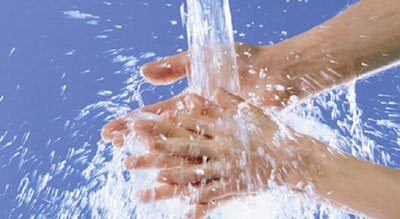
Ever since reading Ora Sheinson's article ("The Halachos of Netilas Yadayim and Water Conservation," in Compendium of Sources in Halacha and the Environment תשס"ו, ed. Ora Sheinson and Shai Spetgang [Jerusalem: Canfei Nesharim, 2005], 45-46), I have been thinking about every time I wash (especially on שבתות (shabbasos)) for bread (this is separate from the washing in the morning post) about how much water I use. I do try to use a minimal amount of water and not waste it (yes, because of בל תשחית (rabbinic prohibition of not wasting), even though there really isn't a need מעיקר הדין (from the letter of the law), but it's something I see as important) (even though the following article in the volume ("Water Conservation and Halacha: An Unorthodox Approach," written by Rabbi Shmuel Simenowitz, pp. 47-53) seems to advocate for washing one's hands בשפע (in abundance), also advocates for being more careful in the rest of one's water usage throughout one's day).
So, here's what's important from the article (I will include the footnotes in parentheses):
The Rambam (n. 2: Hilchot Mikvaot, Chapter 11, Halacha 8) states that each person needs only a revies (n. 3: The opinion of Rav Moshe Feinstein is that a rivies is 3.3 - 4.42 fluid ounces. ...) in the cup to fulfill the mitzvah of washing hands. The Gemarah (n. 4: Chulin 107a) notes that once the cup contains a revies before a person washes, another person may wash after from what remains in the cup. The Shulchan Aruch (n. 5: Orach Chaim 160:15) further states that a rivies is only required when washing for the purposes of seudah (bread). (p. 45)

The plastic washing cups sold in local Judaica stores, which can be found in many homes, shuls, and schools in the religious community, can hold approximately 32 ounces of water. According to the halachos noted above, one need only fill up 1/8 of the cup to fulfill the mitzvah of washing hands. If filled to the brim, eight people can wash from one cup, according to the minimum requirements set out to us by the Rambam and the Shulchan Aruch. In other words, filling and using the entire cup for one person is utilizing three and a half more cups than required. (p. 46)
In light of the actual minimum halachic requirements for netilas yadayim it is also worthy to re-evaluate some of the common practices seen before and after hand-washing: practices such as allowing the water in the cup to overflow while waiting for the next person in line and the emptying of the water remaining in the cup after the last user. (p. 46)
In addition to the practical benefits of the conserved water while performing netilas yadayim, using less water for this mitzvah can also lead to a deeper spiritual understanding and higher level of consciousness about the value and importance of water, and our responsibility to protect all of Hashem's creations. Ideally the new thinking process can lead us to perform other environmentally relevant tasks and help us achieve greater kavanah and consciousness of our reliance on Hashem and His world. (p. 46)
I hope others also come to this realization.
שבת שלום
2 comments:
"All the rivers come to the ocean, but the ocean is never full ..."
I suppose you would have us turning off the water when we brush our teeth now too, wouldn't you.
Seriously, though: What if a person just doesn't feel that he's covered his whole hand with four ounces of water? Would that be a reason to wash with more, or should said person just learn to wash effectively with less water.
I do hope you're joking about leaving the water on when you brush your teeth....
I think one should be more efficient, or effective, with water usage (or more accurate with how they pour the water on their hands). However, if one isn't getting the hang of it, they do still need to cover their whole hand, so they should probably go for whatever it takes to accord with halakhah in these matters in regards to covering their hands with water.
Post a Comment